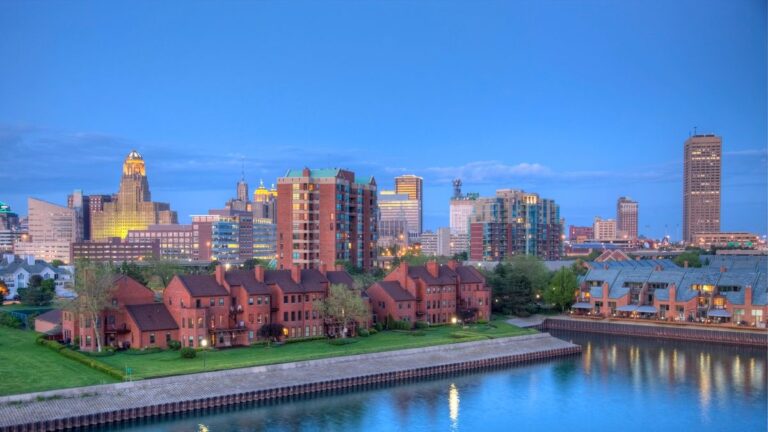Climate change is making more places uninhabitable and causing dangerously high temperatures, extreme weather and sea level rise. With these results, more districts are made uninsured and push people to relocate to more stable locations. Some US cities are emerging as potential climate safe havens because they are tackling the problem effects of climate change at a slower pace. However, no location is completely exempt from the effects, and as conditions worsen, even safe havens will become dangerous to inhabit. These four cities could see a large influx of people displaced by climate disruption.
Buffalo, New York
Located in the northern part of the state, Buffalo has long been a candidate for a climate haven. The city has “climate-friendly geography” and its population has “declined by hundreds of thousands since the 1950s”, making the city eager to welcome new residents, The New York Times mentionted. Buffalo's proximity to the Great Lakes allows it to stay cooler than many other areas. The city rarely hits 100 degrees Fahrenheit, CNN mentionted.
Buffalo prepares to welcome more climate refugees. The city “revised zoning codes in 2017 to encourage development in existing city corridors and began upgrading aging sewer infrastructure.” National Geographic mentionted. “Again, nobody's immune, but I think when you look at some of the strengths that we have in this region, it gives us the ingredients, I think, to chart a course in a world of climate change,” Ryan McPherson said. , said the University at Buffalo's chief sustainability officer Government Technology.
Sign up to The week
Escape from your echo. Get the facts behind the news, plus analysis from multiple angles.
REGISTRATION AND STORAGE
Sign up for our free weekly newsletters
From our morning news update to a weekly newsletter of good news, get the best of the week delivered straight to your inbox.
From our morning news update to a weekly newsletter of good news, get the best of the week delivered straight to your inbox.
Ann Arbor, Michigan
Also located on the Great Lakes, Ann Arbor will likely see a sharp increase in population in the coming decades. Researchers have identified Michigan as a “destination for people seeking to escape the storm-ravaged Southeast or Southwest.” Milling mentionted. The state has also experienced population loss over time, which can be restored by relocation, Michigan Bridge famous.
Ann Arbor also created a “comprehensive city effort to manage stormwater and stay ahead of flooding as the climate warms and precipitation increases.” Planet Detroit mentionted. Jennifer Lawson, Ann Arbor's water resources manager, told the agency, “How can the city recover from the impact of heavy rainfall? If we have flooded roads, if we have flooded parks? What can we do to reduce the impact on the community? in total;”
Duluth, Minnesota
Duluth was deemed a “reverse Duluth climate” in 2019 by a Tulane University professor due to its “abundant supply of fresh water,” its location “unregulated by sea-level rise in the Upper Midwest,” and temperatures “that are mild in summer and colder than cold in winter” The New York Times mentionted. “Duluth is embracing the idea of itself as a climate safe haven” CNN mentionted.
“The idea that we're so ignorant of the needs of our planet that people have to move is terrifying. It's dystopian,” Duluth Mayor Emily Larson told the Times. He has worked to improve the city's carbon footprint as well as build better homes for residents. “People need climate shelter, but there's the possibility of a seismic crash. So far, we're navigating it.”
Columbus, Ohio
Architectural Digest named Columbus the eighth most climate-resilient city in the country. “The city's climate is generally mild, with hot summers and cool winters, and its inland location makes it less prone to the damaging effects of typhoons and other extreme weather events,” new exhibition detailed.
The Midwest has a number of potential paradises because it “has a special appeal with abundant fresh water, cooler summers, and comparatively little danger from hurricanes and wildfires.” Milling mentionted. However, while these areas are safer for now, combating the climate crisis is still critical. “How we respond as a species, as a society, as individuals, I think will really determine what is 'sanctuary' for us and what is not,” Vivek Sandas, a professor at Portland State University, told the agency.

